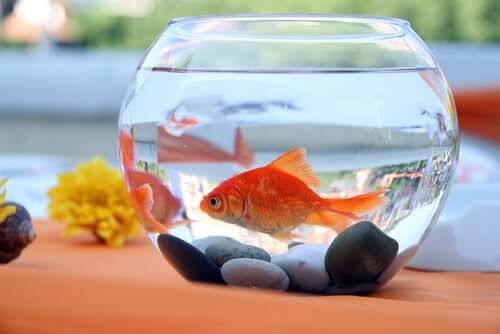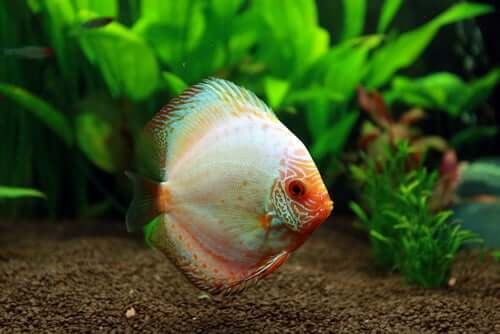Fish Reproduction - All You Need to Know

Being in charge of a cat or a dog is an easy task since these are common pets and many people have them. However, understanding the type of care that other less common animals require is a bit more complicated. For example, do you ever wonder how fish reproduction takes place?
Well, you’ll love this article if you’re curious about it…
Fish reproduction
Reproduction is a fascinating process and we’re often amazed by it. Knowing how it happens in fish is even more interesting because it’s different from other species and also very diverse. For example, many people believe that fish come from eggs but this isn’t always the case.

So, how do fish reproduce? Well, it depends on whether they’re oviparous, viviparous or ovoviviparous. Let’s see how the process happens according to each class:
- Some of the eggs containing the male sperm of oviparous fish would float in the water or just sink to the bottom of the sea. But, fish protect them in order to ensure births. They either place them in their mouths or store them inside water bubbles.
- Viviparous fish give birth to babies that developed inside their bodies.
- The fertilization process of ovoviviparous fish is in their interior, just like their viviparous counterparts. However, these lay eggs instead of giving birth to a living fish. The male fish lays them inside the female and they develop within her until they expel them. Something interesting about these females is they can lay eggs a second time without male intervention. This is because they store some sperm the first time around.
Did you know there are hermaphrodite fish?
Fish reproduction in the case of hermaphrodites is an interesting topic. This is because hermaphrodites have characteristics of both genders and can interchangeably become female or male at will, all according to their mating needs. This is known as simultaneous hermaphroditism.
But, there’s another type known as sequential hermaphroditism. Here, fish are males during the first part of their life but then become females – this is called protandrous hermaphroditism. The opposite case (first female and then male) is known as protogynous hermaphroditism.
Fish reproduction – migration
Migration during reproduction is common in many species of fish. These are done individually or as a pair, and the distance they travel varies according to the class of fish and the time of year.
They do it just to find a suitable place for mating.
As you can see, the process of mating, fertilization, and reproduction of fish is rather exciting.
Breeding fish in an aquarium
So, if you like fish and are suddenly fascinated by their reproductive processes, you may also like to know if they can reproduce in an aquarium. Well, continue reading to find out.

The answer is yes, but you must carefully select the fish. And it’s better to have a group of fish than just a couple of them. Of course, you must ensure they have the same reproduction process. Or that at least some of them do. Keep in mind that fish don’t pair up and it’s easier for them to reproduce if they have several mating options to choose from.
Some fish need to adapt their habits before the breeding process and diet is one of them. Talk to your vet so they can tell you more about it.
The temperature and pH of your aquarium are vital for the survival of your fish. Don’t do sudden movements around the aquarium and keep outside interference to a minimum. Peace of mind is vital to their reproduction process.
We hope we’ve aroused your curiosity about these animals that make great pets. So, are you already thinking about adopting one? Do it, you’ll love it!
Being in charge of a cat or a dog is an easy task since these are common pets and many people have them. However, understanding the type of care that other less common animals require is a bit more complicated. For example, do you ever wonder how fish reproduction takes place?
Well, you’ll love this article if you’re curious about it…
Fish reproduction
Reproduction is a fascinating process and we’re often amazed by it. Knowing how it happens in fish is even more interesting because it’s different from other species and also very diverse. For example, many people believe that fish come from eggs but this isn’t always the case.

So, how do fish reproduce? Well, it depends on whether they’re oviparous, viviparous or ovoviviparous. Let’s see how the process happens according to each class:
- Some of the eggs containing the male sperm of oviparous fish would float in the water or just sink to the bottom of the sea. But, fish protect them in order to ensure births. They either place them in their mouths or store them inside water bubbles.
- Viviparous fish give birth to babies that developed inside their bodies.
- The fertilization process of ovoviviparous fish is in their interior, just like their viviparous counterparts. However, these lay eggs instead of giving birth to a living fish. The male fish lays them inside the female and they develop within her until they expel them. Something interesting about these females is they can lay eggs a second time without male intervention. This is because they store some sperm the first time around.
Did you know there are hermaphrodite fish?
Fish reproduction in the case of hermaphrodites is an interesting topic. This is because hermaphrodites have characteristics of both genders and can interchangeably become female or male at will, all according to their mating needs. This is known as simultaneous hermaphroditism.
But, there’s another type known as sequential hermaphroditism. Here, fish are males during the first part of their life but then become females – this is called protandrous hermaphroditism. The opposite case (first female and then male) is known as protogynous hermaphroditism.
Fish reproduction – migration
Migration during reproduction is common in many species of fish. These are done individually or as a pair, and the distance they travel varies according to the class of fish and the time of year.
They do it just to find a suitable place for mating.
As you can see, the process of mating, fertilization, and reproduction of fish is rather exciting.
Breeding fish in an aquarium
So, if you like fish and are suddenly fascinated by their reproductive processes, you may also like to know if they can reproduce in an aquarium. Well, continue reading to find out.

The answer is yes, but you must carefully select the fish. And it’s better to have a group of fish than just a couple of them. Of course, you must ensure they have the same reproduction process. Or that at least some of them do. Keep in mind that fish don’t pair up and it’s easier for them to reproduce if they have several mating options to choose from.
Some fish need to adapt their habits before the breeding process and diet is one of them. Talk to your vet so they can tell you more about it.
The temperature and pH of your aquarium are vital for the survival of your fish. Don’t do sudden movements around the aquarium and keep outside interference to a minimum. Peace of mind is vital to their reproduction process.
We hope we’ve aroused your curiosity about these animals that make great pets. So, are you already thinking about adopting one? Do it, you’ll love it!
This text is provided for informational purposes only and does not replace consultation with a professional. If in doubt, consult your specialist.








